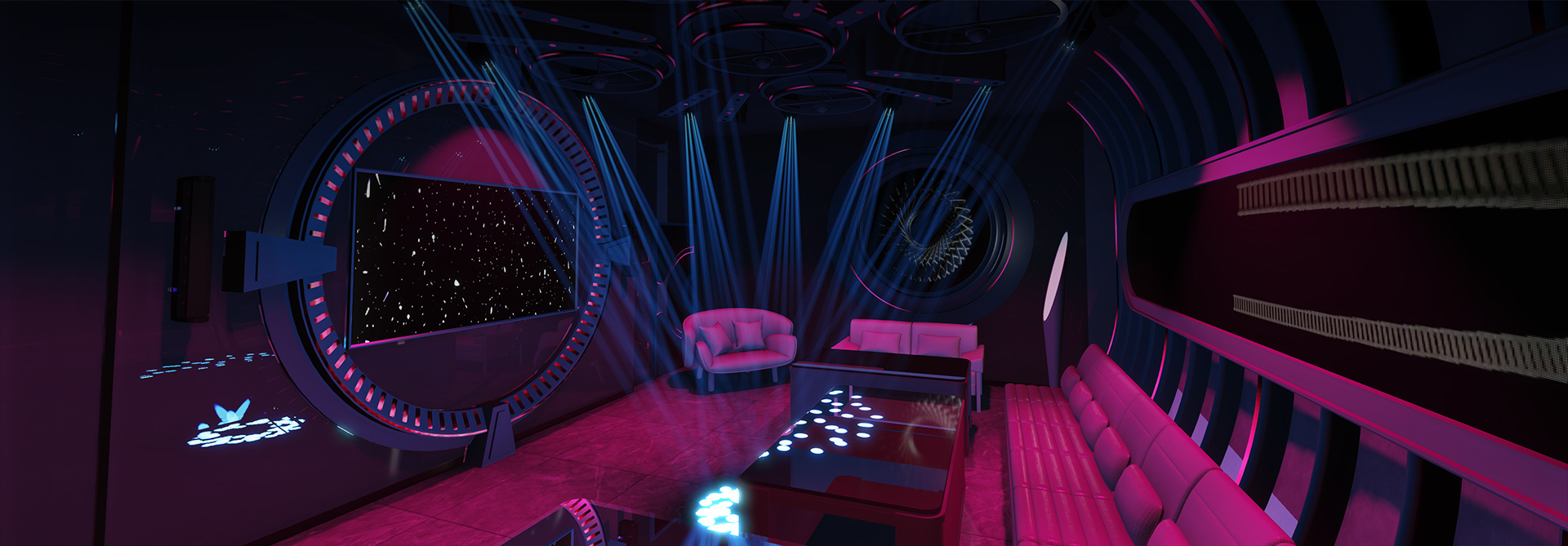NIGHTLIFE?&?CLUBS
Nightclubs are more than just venues for music; they are immersive experiences where
In the context of NIGHTLIFE & CLUBS, lighting plays a crucial role in creating the desired atmosphere, enhancing the overall experience, and influencing the mood of the venue. Here's a brief description of entertainment lighting, architectural lighting, and lighting controllers in this application:
Entertainment Lighting:
Purpose: Entertainment lighting is specifically designed to enhance the visual experience during performances, events, and parties. It includes various types of lighting fixtures, such as moving lights, spotlights, lasers, strobe lights, and LED panels.
Effects: These lights are capable of creating dynamic and immersive effects, such as color changes, patterns, and synchronized movements. They contribute to the energetic and dynamic ambiance of nightclubs and other entertainment venues.
Control: Entertainment lighting systems are often controlled by lighting consoles or software, allowing operators to program intricate light shows and sequences that synchronize with the music and overall event theme.
Architectural Lighting:
Purpose: Architectural lighting is focused on enhancing the aesthetics and highlighting the design features of the physical space. It's not only functional but also adds an artistic element to the overall design of the venue.
Placement: Fixtures may be strategically placed to illuminate architectural elements like walls, pillars, or unique structures within the club. It can also be used for ambient lighting to create a visually appealing environment.
Versatility: Architectural lighting can be static or dynamic, depending on the design intent. LED strips, recessed lights, and wall-mounted fixtures are common choices to achieve architectural lighting goals.
Lighting Controllers:
Centralized Control: Lighting controllers are essential for managing and manipulating the various lighting elements in a nightclub or entertainment venue. They serve as the central command point for orchestrating different lighting fixtures and effects.
DMX Protocol: Many lighting controllers use the DMX (Digital Multiplex) protocol to communicate with lighting fixtures. This allows for precise control over parameters such as color, intensity, and movement.
Programming: Lighting controllers enable operators to program and automate lighting sequences, ensuring a seamless integration with the music and overall event production. Manual control is also often available for real-time adjustments.
In summary, the combination of entertainment and architectural lighting, controlled by sophisticated lighting controllers, allows nightlife and clubs to create immersive, visually stimulating environments. These elements work together to enhance the overall experience, making the venue more appealing and engaging for patrons.










